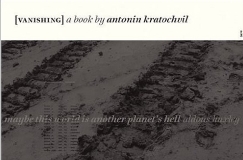Site created by Amplitude. |
||
Viet Nam at Peace review
Viet Nam At Peace, Philip Jones Griffiths – Trolley £39.95
Vanishing, Antonin Kratochvil – de.MO £39.99
The Viet Nam war and its consequences have been a 40-year project for Welsh-born photographer Philip Jones Griffiths, who first set foot in the beleaguered country in 1966. His first volume of work printed in 1971, Viet Nam Inc., is widely recognised as one of the best pieces of reportage about the war, as well as one of the most outstanding pieces of photojournalism.
His latest work, Viet Nam at Peace, timed to coincide with the 30th anniversary of the fall of Saigon to the Viet Cong, is a comprehensive examination of how a country that was systematically carpet-bombed for over a decade has coped since US troops abandoned hope of stemming “communist aggression” from the north. With a foreword by John Pilger, who met and worked with Jones Griffiths in Viet Nam, the book examines the debris of war – both human and environmental, as well as the fate of the country’s boat people, Amerasians, and “Missing in Action” activists in the US.
It becomes obvious early on in the book that too many people are still trying to come to terms with the health and socio-economic problems that the war bequeathed them. Decades after US troops pulled out, Jones Griffiths reveals a country struggling to address deep social problems, such as dramatic rises in prostitution and drug addiction. He also shows us that ordinary people are still being maimed and killed by discarded weaponry and bombs that failed to detonate when they were first dropped.
But the work also shows us that many US army veterans are unable to accept the result of the war. In one set of photographs, Jones Griffiths shows a US “war hero” visiting the country with his daughter who cannot resist placing glossy prints of himself dressed in full military regalia on objects commemorating the Communist victory. Later, there are pictures of Senator John McCain attending a 25th anniversary of the war’s end, shortly after announcing that “the wrong guys won”.
In Viet Nam at Peace Jones Griffiths reserves the final 80-pages to chart the country’s passage into consumerism, referred to by Viet Namese politicians as “Doi Moi”. Jones Griffiths is in no doubt that that the country’s embrace of capitalism is a malevolent one, and benefits few people in the country.
Since the war officially ended in 1975, Jones Griffiths has returned to the country 25 times to catalogue its effects on the civilian population. Two years ago, to coincide with the 30th anniversary of the US withdrawal from the country, Jones Griffiths and Trolley – the publisher of this latest book – released another volume of work on the aftermath of the war, called Agent Orange: “Collateral Damage” in Viet Nam. I bought a copy to remind myself of the horrors that are always inflicted on ordinary civilians in any war.
The total amount of Agent Orange used during the Vietnam War is estimated at approximately 11 million gallons. That estimate comes from Dow Chemical, one of the seven producers of the defoliant. Today in Vietnam there are 150,000 children whose parents allege their birth defects are the result of exposure to Agent Orange during the war, or the consumption of dioxin-contaminated food and water since 1975.
The Vietnamese government estimates that three million Vietnamese were exposed to these chemicals during the war, and that at least 800,000 suffer serious health problems today as a result. Dr Arnold Schecter, a leading expert in dioxin contamination in the US, sampled the soil at a former US base in Viet Nam in 2003 and found it contained dioxin levels that were 180 million times above the safe level set by the US environmental protection agency.
As a result, many of the pictures made for grim viewing. Indeed, the book’s tone was unforgiving and uncompromising. Page after page was littered with pictures of children suffering from horrendous after effects from the US military’s widespread use of defoliants. Some are reproduced in this current volume.
Viet Nam at Peace is an excellent and authoritative work on the Viet Nam war and the development of the country since. The book succeeds on two levels – as first-rate photojournalism, and as a social documentary.
Widespread man-made destruction is obviously a theme that resonates with photojournalists. Depressing and grim, but well presented, Antonin Kratochvil’s latest work Vanishing is a collection of 16 darkly printed black and white photo-essays taken over the past 16 years from 16 different countries. The volume includes people mining for gold in Guyana using cyanide; industrial pollution, demolished towns and burning landscapes in Bohemia; bush meat markets in the Congo; ravaged rainforests in Ecuador; and New York on 11 September 2001.
Kratochvil’s photographs are unsparing and leave us in no doubt that ecological disaster is not far away unless there is radical change, and we should all thank him for that.
“Jones Griffiths is in no doubt that that the country’s embrace of capitalism is a malevolent one, and benefits few people in the country”


"Kratochvil’s photographs are unsparing and leave us in no doubt that ecological disaster is not far away unless there is radical change"
